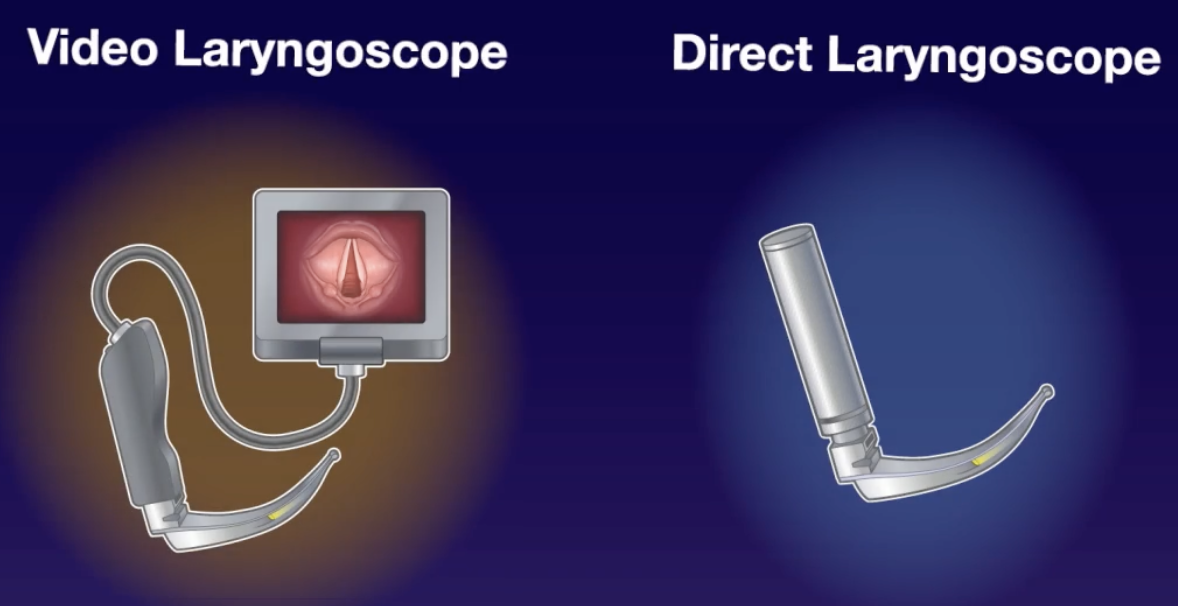Conclusion: Video laryngoscopy results in higher rates of first-pass success when intubating critically ill adults in an Emergency Department or ICU
- The DEVICE trial seeks to answer the question of whether to choose VL or DL when intubating adults within the Emergency Department or ICU
- Failure to intubate the trachea on the first attempt occurs in 20 to 30% of tracheal intubations performed in the emergency department or intensive care unit (ICU) and is associated with an increased risk of life-threatening complications
- Several single-center trials and a moderate-sized multicenter trial have been conducted to compare the outcomes when VL vs DL is used, and these trials showed differing results, including better outcomes with a VL, better outcomes with DL, and no significant differences in outcomes between the two types
- One major issue has been that most prior studies have been either retrospective observational or prospective studies randomised according to a factor other than blade type
- This was a large, multicenter, unblinded, prospective randomised trial from 7 EDs and 10 ICUs across the United States enrolling patients 18 yrs or older undergoing endotracheal intubation
- Those who were pregnant, prisoners, had an immediate need for tracheal intubation that precluded randomisation, or had a clinician-determined need for a particular device choice on first attempt were excluded
- The primary outcome was successful intubation on the first attempt, defined as the placement of an ETT in the trachea with a single insertion of a laryngoscope blade (+/- bougie) and ETT into the mouth
- The secondary outcome was a composite of severe hypoxemia, hypotension, need for vasopressors, cardiac arrest, or death within 2 minutes after the procedure
- 1947 patients were assessed for eligibility, of whom 1420 (72.9%) were enrolled
- 3 were subsequently identified as prisoners and therefore excluded
- Patient characteristics were similar across groups, with a mean age of approximately 55 years, a mean BMI of 26.5 kg/m2
- 70% of intubations occurring in the ED
- Median number of previous intubations performed: 50 vs 50
- Resident intubators: 73% vs 71%
- Altered mental status or pneumonia being the primary indications for intubation in most cases (45% and 30%, respectively)
- 70% of intubations occurring in the ED
- Protocol adherence was high VL used in 100.0% of those randomised to the VL group, while DL was used in 98.9% of the DL group
- Results: Successful intubation on the first attempt occurred in 600 of the 705 patients (85.1%) in the VL group and in 504 of the 712 patients (70.8%) in the DL group (absolute risk difference, 14.3 percentage points; 95% CI, 9.9 to 18.7; P<0.001)
- A Grade 1 view (Cormack-Lehane) was reported in 76.3% of the VL group vs 44.7% of the DL group (absolute risk difference, 31.6 percentage points; 95% confidence interval [CI], 26.7 to 36.6)
- There was no significant difference in the composite secondary outcome between groups
- The study was stopped early with these results following a planned interim analysis
- Strengths:
- Very well done RCT with robust study design
- Multicentre study that increases external validity
- Reflective of real work practise with decision of blade type (standard geometry vs hyperangulated) left up to treating clinician
- Limitations:
- Relative inexperience group of intubators limits generalisability to more experienced clinicians, supported by the fact that the between group difference decreased to 5.9% among operators with >100 prior intubations (still favouring VL)
- There was a high baseline usage of VL compared to DL which may have affected performance in the DL group due to unfamiliarity with the device
Reference: Prekker ME, Driver BE, Trent SA, et al. Video versus Direct Laryngoscopy for Tracheal Intubation of Critically Ill Adults. N Engl J Med. 2023 Aug 3;389(5):418-429.
Full article: https://www.nejm.org/doi/pdf/10.1056/NEJMoa2301601

